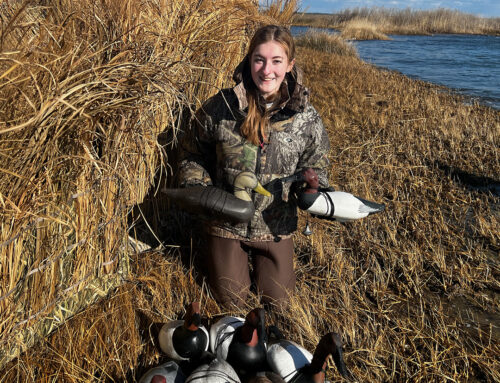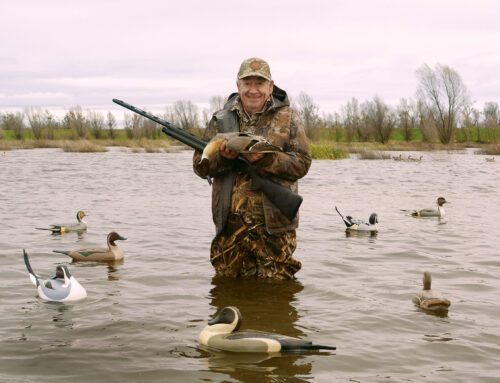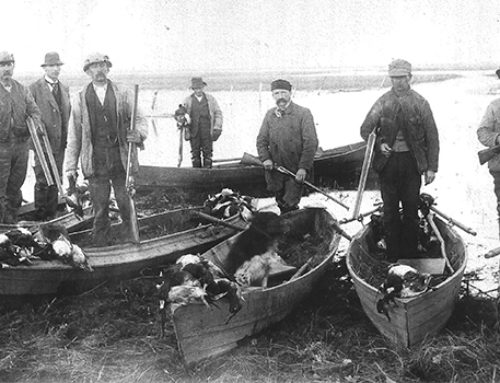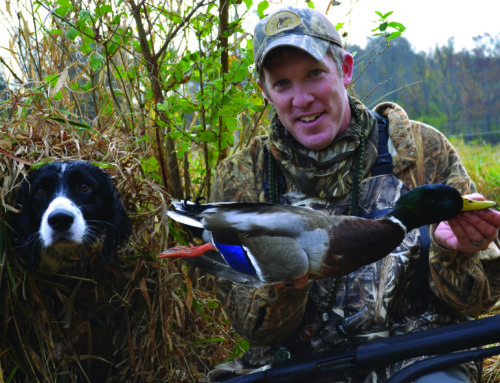An Unsung Conservation Pioneer
By Paul Wait, Editor/Publisher
If you hunt waterfowl in the United States, you buy one every year. Many hunters buy two.
 And why not? Federal Duck Stamps are an excellent investment in waterfowl conservation. Since 1934, duck stamp sales have raised more than $1 billion and helped conserve more than 6 million acres of waterfowl habitat.
And why not? Federal Duck Stamps are an excellent investment in waterfowl conservation. Since 1934, duck stamp sales have raised more than $1 billion and helped conserve more than 6 million acres of waterfowl habitat.
If you know a bit about the history of the Federal Duck Stamp, which is properly known as the Migratory Bird Hunting & Conservation Stamp, you’ve heard of Jay Norwood “Ding” Darling, the man who created the artwork for the very first stamp, which was issued in 1934.
Darling, a Pulitzer Prize winning political cartoonist for The Des Moines (Iowa) Register, cared deeply about conservation. He used his pen to advocate for wetland conservation, drawing cartoons that railed against continued drainage of lakes and marshes. He also took aim at market gunners for overharvesting waterfowl, calling for sensible game laws to protect game bird populations.
Indeed, waterfowl populations were in trouble in the early 1900s, a fact that in large part spawned a conservation movement led by President Theodore Roosevelt. He is credited as the father of the National Wildlife Refuge System, another key conservation cause that Darling influenced by publishing his mighty ink drawings. In 1928, Darling drew a cartoon titled, “Wanted: More and Better Game Refuges,” which depicts migrating waterfowl saying, “If we only had a place to stop and catch our breath.”
Working for Waterfowl
The Federal Duck Stamp came a bit later in the movement. In 1933, President Franklin D. Roosevelt appointed a special commission to restore waterfowl populations. Aldo Leopold, who is considered the “father of wildlife management,” was a member, as was Darling. The commission produced a report that called on the federal government to spend $50 million on wildlife restoration and habitat.
After the controversial report was delivered to the president, Roosevelt appointed Darling to head the U.S. Biological Survey, which later became the U.S. Fish and Wildlife Service. Some people considered Darling’s appointment ironic, because through his many cartoons, he’d been an outspoken critic of the Survey and its wildlife management policies.
In the book, The Duck Stamp Story, Darling was reportedly not keen to take the position, particularly because his political ideals differed greatly from the president. But Darling set aside his disdain for Washington D.C. politics, largely because he had a vision to “bring back the ducks.”
Darling was sworn in as chief of the Survey on March 10, 1934. Just six days later, Roosevelt signed into law the Migratory Bird Hunting Stamp Act. Stamp sales would fund acquisition of migratory bird habitat in the National Wildlife Refuge System.
A drawing for the first duck stamp was needed quickly, so Darling sketched out some ideas on leftover cardboard pieces that were used to keep shirts from wrinkling. One of the renderings, a pair of mallards landing in a marsh, famously became the 1934-35 Federal Duck Stamp.
The Delta Waterfowl Connection
While Darling certainly garners credit as the champion of the Federal Duck Stamp Program, other men were also key to its creation.
Frederic C. Walcott, who was elected to the U.S. Senate from Connecticut in 1928, co-sponsored the bill that created the Federal Duck Stamp. Before serving in the U.S. Senate, Walcott had been fish and game commissioner for Connecticut. In 1921, Walcott penned an article titled, “The Necessity of Free Shooting Grounds,” which was a plea for public hunting lands. The article put forth the idea of a federal hunting license, and contained a drawing of this proposed license. It depicted a Canada goose, and the design of the license looks remarkably similar to a Federal Duck Stamp. And just like the Duck Stamp, this proposed license would have been sold at U.S. post offices. Bills supporting a federal hunting license were introduced in Congress in 1921, but did not pass.
Certainly though, Walcott’s effort was the forerunner to the Federal Duck Stamp, and he was proud to sponsor the Duck Stamp Act in Congress.
Walcott and Darling were continuously working toward similar conservation goals, and their alliance was important in the history of Delta Waterfowl, too.
Delta credits James Ford Bell, the Minnesota businessman who in 1926 bought the organization’s legacy property at the Delta Marsh in Manitoba, as the founder of Delta Waterfowl.
However, Walcott is the earliest thread in Delta’s genealogy.
In 1911, the American Game Protective and Propagation Association was founded by the shooting sports industry to protect wildlife. This organization was endorsed by Theodore Roosevelt. Walcott was a founding member.
Walcott worked for conservation causes throughout his life. Together, Walcott and Darling created the American Wildlife Institute in 1935. This new organization effectively replaced the AGPPA.
Meanwhile, Bell built a duck hatchery at the Delta Marsh in 1931, employed Ed Ward and started trying to put ducks back for those they shot at their club. In addition to raising ducks, they began to study them, and Bell began to interact with and seek out leading waterfowl scientists of the time, including Dr. William Rowan of the University of Alberta. He also sought Leopold, who supplied the first graduate researchers to the Delta Duck Station, H. Albert Hochbaum in 1938, and Lyle Sowls in 1939.
The intersect of AWI and Bell happened in 1937, when with Leopold’s backing, the AWI agreed to fund the science program at the Delta Duck Station, Bell’s property at the Delta Marsh. The AWI paid Hochbaum’s $900 salary in 1938. Walcott oversaw the program at the Delta Duck Station, and the advisory board for the early research included Leopold, Rowan, and Miles Pirnie of Michigan State University.
Walcott served as president of the AWI — the forerunner of what is today Delta Waterfowl — until 1940, and remained on the board through 1950.
So, when you purchase a Federal Duck Stamp, you are paying a debt of gratitude toward Roosevelt, Darling and Walcott, conservation leaders whose vision a century ago allows us to continue to enjoy the tradition of waterfowl hunting today.






Leave A Comment